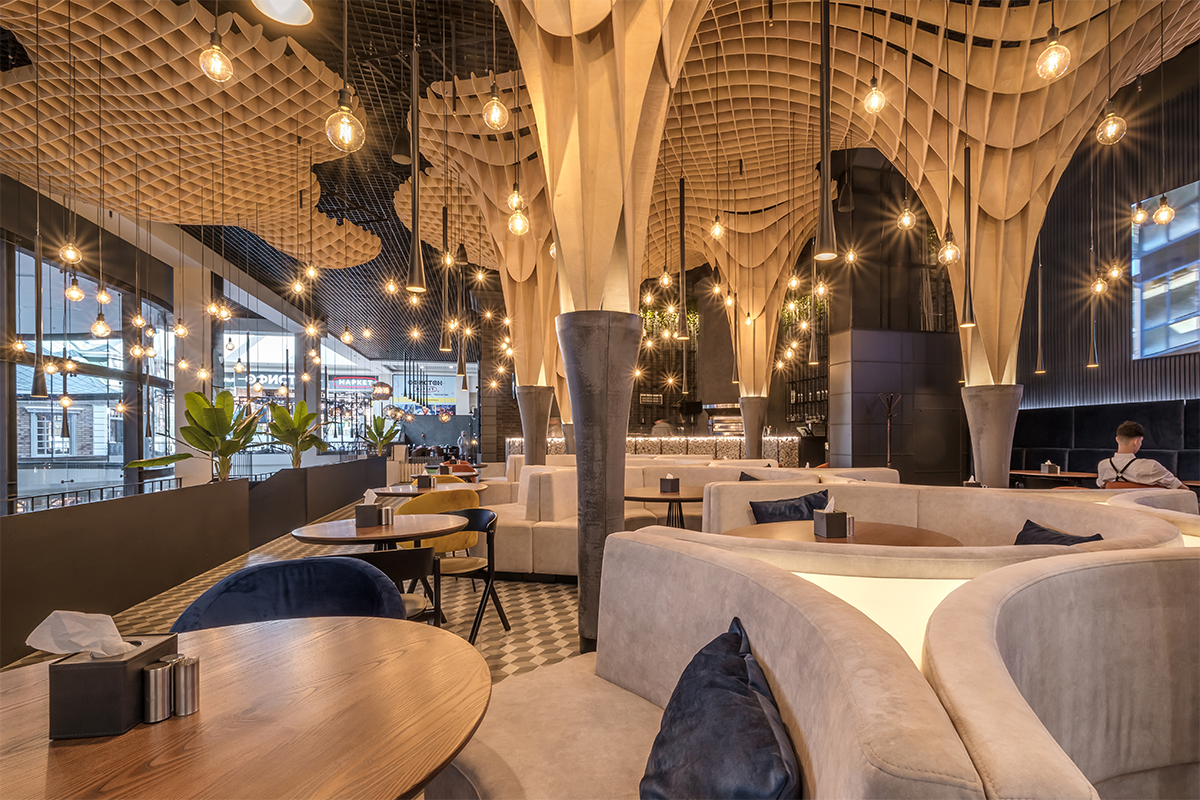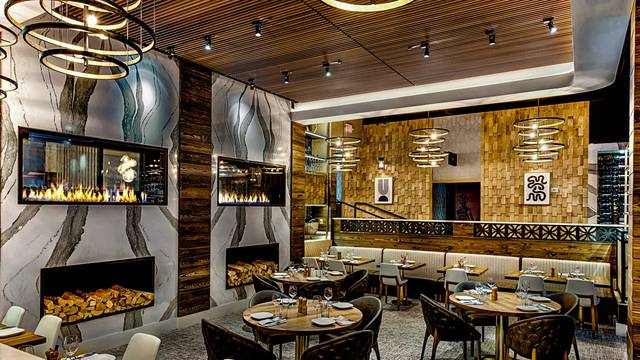Best Ambiance Restaurants Islamabad: Perfect Destinations for a Memorable Dish
Best Ambiance Restaurants Islamabad: Perfect Destinations for a Memorable Dish
Blog Article
Savor Authentic Asian Food With a Pan-Asian Twist for a Culinary Journey
Embarking on a culinary trip with authentic Oriental food, boosted with a Pan-Asian spin, supplies an one-of-a-kind chance to check out the abundant tapestry of flavors that define the area's diverse cooking customs. This experience invites you to appreciate the splendid balance of preferences-- pleasant, salty, spicy, and sour-- harmonized by aromatic herbs and seasonings. Imagine the innovative blend of Thai curry and ramen or the unexpected delight of sushi burritos. As you contemplate these tempting meals, take into consideration the cultural narratives and historic impacts that shape them, each bite supplying a story waiting to be uncovered.

Exploring Pan-Asian Flavors
In the realm of global gastronomy, Pan-Asian cuisine sticks out for its amazing variety and the unified interplay of tastes from different Eastern societies. This cooking method commemorates the abundant traditions and special ingredients discovered across the continent, producing a tapestry of preferences that is both enjoyable and fascinating. Secret to Pan-Asian cuisine is its capability to stabilize contrasting tastes-- wonderful, salted, spicy, and sour-- while highlighting the freshness and quality of each component.
From the umami-rich soy sauce of Japan to the fiery chili peppers of Thailand, Pan-Asian food uses an extensive combination of tastes. These elements are commonly integrated in inventive methods, improving recipes with layers of complexity. As an example, making use of great smelling herbs such as lemongrass and cilantro, typical in Vietnamese and Thai food, includes a revitalizing brightness to recipes, while the incorporation of coconut milk provides a creamy, rich structure.
The emphasis on fresh produce and aromatic spices guarantees that each meal is not only a feast for the preference buds however likewise for the senses. Pan-Asian food welcomes restaurants to start a culinary journey, exploring the large and differed landscapes of Oriental gastronomy with every bite.
Fusion Meals to Try
While Pan-Asian cuisine is celebrated for its traditional flavors, the contemporary cooking landscape is progressively embracing blend dishes that blend these traditional aspects with influences from other areas. This cutting-edge technique not only honors the abundant heritage of Asian culinary arts however also presents unique preference experiences that appeal to contemporary palates.
A prime instance of such a blend meal is the Korean-Mexican taco, where seasoned bulgogi beef is covered in a cozy tortilla, topped with kimchi and a hot gochujang-infused salsa. This combination weds the strong, savory flavors of Korea with the vibrant, fresh aspects of Mexican cuisine. Similarly, sushi burritos have acquired appeal, joining together the fragile creativity of Japanese sushi with the passionate, hand-held benefit of a burrito, frequently including fusion ingredients like tempura shrimp and avocado with a drizzle of wasabi mayo.
An additional significant meal is Thai curry ramen, which infuses the luscious, fragrant flavors of Thai curry into the comforting brew of conventional Japanese ramen, creating an unified mix that tantalizes the senses. These fusion dishes prolong past simple novelty; they stand for a cooking dialogue in between cultures, motivating expedition and advancement worldwide of Pan-Asian food.
Essential Components and Spices
To truly appreciate Pan-Asian cuisine, one must comprehend the necessary components and flavors that develop its structure. This varied culinary style draws from a rich tapestry of Oriental traditions, utilizing an unified mix of textures and flavors.
Aromatic components are critical, with ginger, garlic, and lemongrass being ubiquitous throughout numerous Pan-Asian dishes. These components give a great smelling base that boosts the intricacy of tastes. Flavors such as star anise, cardamom, and cinnamon introduce warmth and character, resembling impacts from regions like China and India.

Food Preparation Methods and Tips
Mastering the art of Pan-Asian cuisine calls for knowledge with its distinctive food preparation techniques, each contributing to the vivid tapestry of tastes this cooking custom is celebrated for. Central to these approaches is the stir-fry, a fast cooking strategy that protects the dietary stability and dazzling shades of active ingredients. Using a frying pan, the stir-fry method enables for also warm distribution, essential for achieving the particular structure and taste balance of why not find out more Pan-Asian recipes.
Another fundamental method is steaming, specifically prevalent in Chinese food. This gentle technique preserves the natural flavors and nutrients of active ingredients, making it optimal for seafood and vegetables. Dumplings, a beloved staple, usually take advantage of steaming, resulting in soft, delicious textures.
Grilling, also integral, imparts smoky depths to meals such as Oriental bulgogi or Japanese yakitori (pan asian dining Islamabad). This technique commonly includes marinading components, enabling tastes to permeate deeply prior to food preparation over an open fire or warmer
Last but not least, grasping the art of stabilizing tastes-- sweet, sour, salted, bitter, and umami-- is essential. Properly layering these aspects can raise a recipe from common to extraordinary, using a complicated and pleasing culinary experience that embodies the essence of Pan-Asian food.
Eating Experiences Worldwide
Throughout the globe, Pan-Asian cuisine offers an unrivaled eating experience, celebrated for its rich tapestry of flavors and vibrant presentations. This culinary sensation has actually transcended cultural boundaries, capturing the hearts and palates of food fanatics worldwide. In multicultural cities like New York, London, and Sydney, Pan-Asian dining establishments work as fusions where culinary practices from Thailand, Japan, China, and past converge, supplying restaurants with a diverse mix of dishes that highlight the area's diversity.
The worldwide appeal of Pan-Asian food depends on its capability to use both credibility and innovation. Cooks skillfully marry conventional active ingredients such as lemongrass, soy sauce, and miso with contemporary techniques, causing recipes that are both refreshingly new and familiar. This combination allows diners to get started blog here on a cooking journey that appreciates heritage while embracing modernity.
In addition, eating experiences are elevated via attentively designed environments that show the values of Pan-Asian aesthetics. From minimal Japanese-inspired insides to vibrant Thai-themed rooms, each dining establishment supplies a special atmosphere that matches the cooking offerings. Consequently, customers are not merely taking in a dish yet partaking in a social experience, making Pan-Asian eating a truly global sensation.
Final Thought
The expedition of Pan-Asian food provides a profound understanding of the detailed interplay of tastes and culinary traditions across Asia. By embracing fusion recipes such as Thai curry ramen and sushi burritos, the cooking trip not just highlights the flexibility of traditional components however also showcases cutting-edge contemporary methods. This gastronomic journey, enhanced by vital seasonings and cooking methods, gives a special opportunity to appreciate the multiculturalism and culinary creativity that specify Pan-Asian food on a global range.
Beginning on a culinary trip through authentic chuck e cheese pizza Eastern cuisine, boosted with a Pan-Asian twist, offers an one-of-a-kind possibility to explore the rich tapestry of tastes that define the region's diverse culinary traditions.In the world of global gastronomy, Pan-Asian food stands out for its amazing variety and the harmonious interaction of flavors from different Eastern societies. Key to Pan-Asian cuisine is its capability to balance contrasting tastes-- pleasant, salted, spicy, and sour-- while highlighting the freshness and high quality of each component.

Report this page